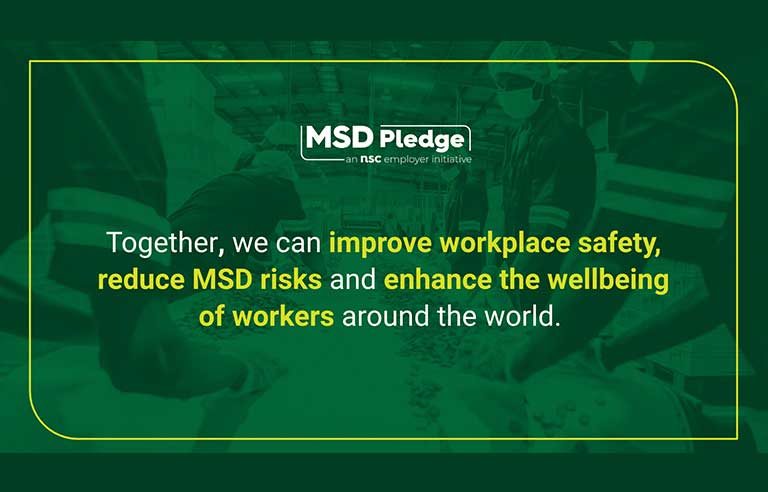NSC summit spotlights ongoing efforts to reduce MSDs

Itasca, IL — Reducing work-related musculoskeletal disorders by 25% by 2025 is a goal that requires commitment.
In 2022, the National Safety Council MSD Solutions Lab invited employers to join the global movement by taking the MSD Pledge.
In just a year, involvement has climbed more than 900% – a fact celebrated June 15 during the lab’s second annual virtual Workplace Safety Summit.
“We launched the pledge with just 16 organizations a year ago, and today the membership has grown to more than 160 organizations,” Paul Vincent, executive vice president of workplace practice at NSC, said during the event. “Every one of them committed to solving MSDs.”
MSDs – which include tendinitis, back strains and sprains, and carpal tunnel syndrome – remain the most common workplace injury and are the leading cause of worker disability, early retirement and limitations to gainful employment.
In addition to marking the one-year anniversary of the pledge, a free initiative launched by NSC in collaboration with Amazon, the summit included remarks from NIOSH Director John Howard as well as a panel discussion featuring executives from three organizations that have signed the pledge.
Kristine Kohn, senior manager of ergonomics and industrial athletes for Pacific Gas and Electric Co., touted the benefits of one particular aspect of the pledge: the MSD Solutions Index. Developed by the lab in partnership with academic and industry experts, the index collects information about pledge participants’ MSD prevention efforts. It also offers pledge-signers a comprehensive overview of progress on pledge commitments such as safety culture, MSD risk-reduction efforts, and innovation and collaboration.
Kohn said the benchmarking tool and its feedback have “been invaluable” to PG&E.
“And I think it lends credibility to our program, the things that we’re doing, and demonstrates our company’s commitment to safety.”
In his keynote address, Howard spoke about how the future world of work – namely the use of wearable robotics such as industrial exoskeletons – has begun to intersect with MSD prevention.
He cited a series of studies suggesting the use of exoskeletons during occupational tasks modifies physical strain, which could potentially mitigate the risk of MSD development. He added that more research is needed.
“Wherever you look in any of these new technologies that are coming online in the future of work,” Howard said, “it’s going to be a challenge for safety and health professionals, no doubt. And we’re going to have to learn new things.”
NSC President and CEO Lorraine M. Martin said MSDs have “a far-reaching impact” that extends beyond employers’ bottom line.
“While NSC was among the first to sound the alarm on this issue,” she added, “we are proud to stand together with many others now in solving it.”
Post a comment to this article
Safety+Health welcomes comments that promote respectful dialogue. Please stay on topic. Comments that contain personal attacks, profanity or abusive language – or those aggressively promoting products or services – will be removed. We reserve the right to determine which comments violate our comment policy. (Anonymous comments are welcome; merely skip the “name” field in the comment box. An email address is required but will not be included with your comment.)

